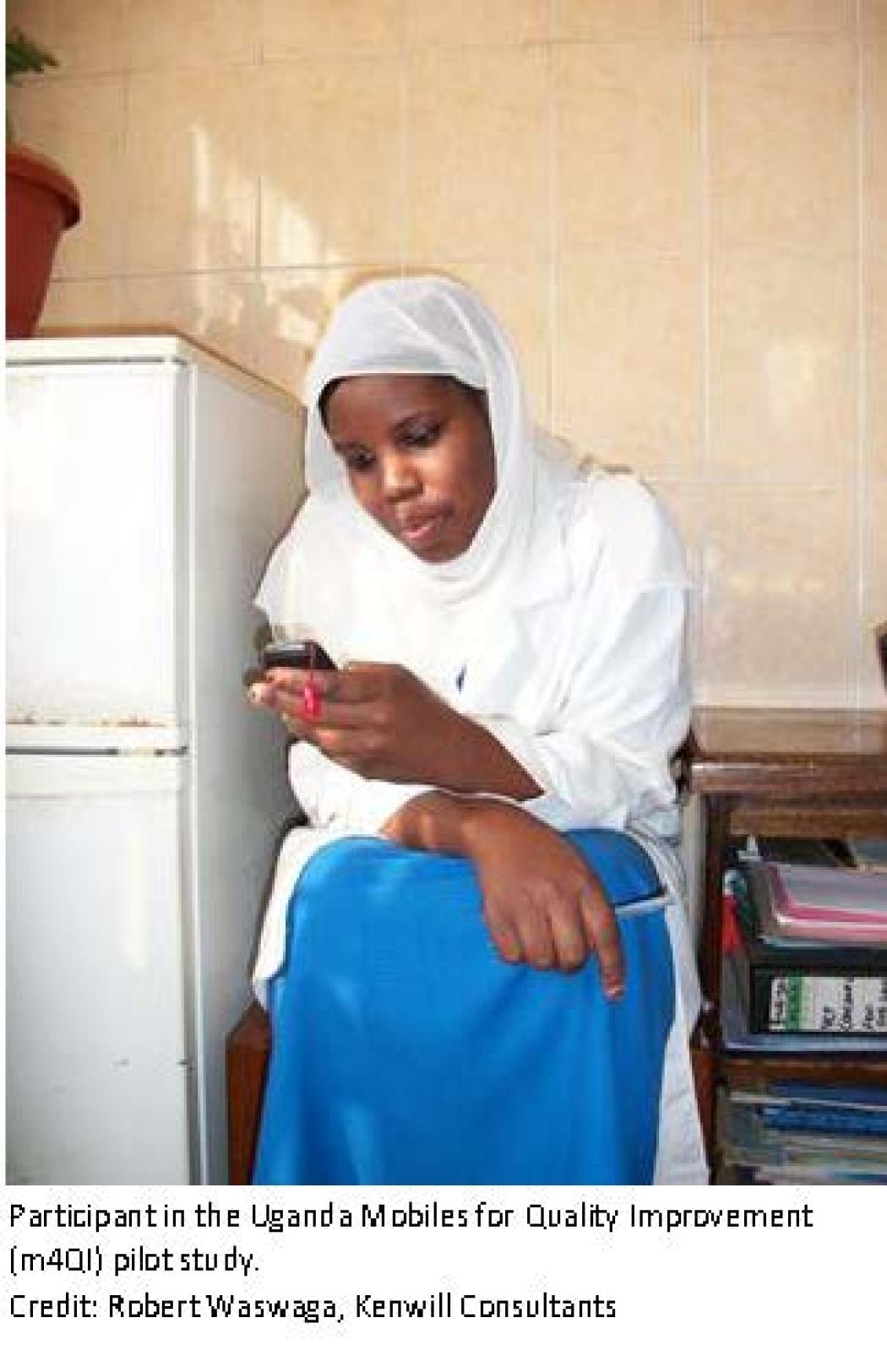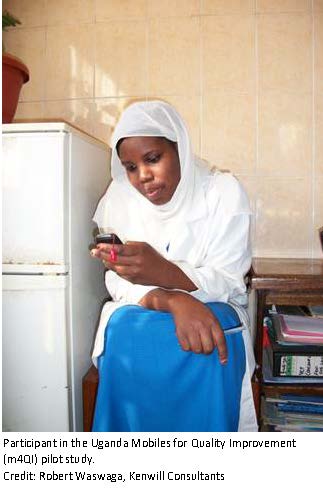The Power of Technology for Training

By James BonTempo and Julia Bluestone, Jhpiego  It starts with a simple question: can information and communication technology be harnessed to improve and address gaps in frontline health worker training? The overwhelming answer, yes! Dalberg Global Development Advisors, on behalf of the iheed Institute, the Barr Foundation, the mHealth Alliance and the MDG Health Alliance, recently released a landscape report on current approaches to community health worker (CHW) training, exploring what role technology, particularly mobile phones, could play in increasing the number and quality of community health workers. Many Front Line Health Worker Coalition member organizations were involved in the development of the report. With developing countries facing an acute shortage of health professionals, CHWs—a type of frontline health worker—are oftentimes the only point of contact for patients in need. CHWs provide low-cost, lifesaving interventions in areas like maternal and child health, vaccinations and basic health education. To address the drastic shortage of frontline health workers globally, it’s clear we must scale up the number of CHWs while also improving the effectiveness of existing ones. So, how can technology help us train more CHWs more effectively? According to the study: - Evidence indicates that a “blended” approach that combines live training with interactive multimedia content can be as or more effective than standard, face-to-face training. - Up to 80 percent of training content could be standardized and shared, reducing duplication of effort and saving time and money. Open licensing schemes, such as Creative Commons, could facilitate sharing of effective digital content. - With mobile phone access as high as 80 percent among CHWs in some countries, mobile technology could be used to support training and informal learning. Every CHW with a mobile phone can use it to solve problems and seek advice from peers, mentors and supervisors—with something no more complex than a phone call or text message. Using technology in the training of community health workers can support more efficient expansion in the numbers of frontline health workers, more effective training approaches and informal, peer-to-peer learning. So, what’s next? Many members of the Frontline Health Worker Coalition are looking closely at how to develop innovative approaches to education and training supported by technology. What we’ve found, which corroborates many of the findings from the study, is that the development of education and training technologies must be driven by the needs and demands of frontline health workers and the populations they serve. Also, experimentation and innovation should be utilized in targeting well-characterized problems, rather than simply using technology because it’s available. It’s also important to have an appetite for risk, as the inevitable failures associated with innovation are essential to the learning process. And finally, implementing technology-supported training for frontline health workers is only one piece of the puzzle: we must advocate for and invest in all of the components of the health workforce system that contribute to their success. As the study reminds us, a generation ago, few would have dreamed that mobile technology would create five billion points of contact around the world or that nine out of 10 Internet users in sub-Saharan Africa would access the Internet through mobile devices. Now that this dream has become a reality, it’s our turn to imagine how technology can transform global health for the next generation. Want to learn more about the study and its findings? Use the technology at your fingertips and visit http://www.iheed.org/. Written by: James BonTempo and Julia Bluestone, Jhpiego. Jhpiego is a member of the Frontline Health Workers Coalition, a dynamic and influential coalition of 25+ NGOs working together to urge greater and more strategic U.S. investment in frontline health workers in the developing world as the most cost-effective way to save lives and foster a healthier, safer and more prosperous world.
It starts with a simple question: can information and communication technology be harnessed to improve and address gaps in frontline health worker training? The overwhelming answer, yes! Dalberg Global Development Advisors, on behalf of the iheed Institute, the Barr Foundation, the mHealth Alliance and the MDG Health Alliance, recently released a landscape report on current approaches to community health worker (CHW) training, exploring what role technology, particularly mobile phones, could play in increasing the number and quality of community health workers. Many Front Line Health Worker Coalition member organizations were involved in the development of the report. With developing countries facing an acute shortage of health professionals, CHWs—a type of frontline health worker—are oftentimes the only point of contact for patients in need. CHWs provide low-cost, lifesaving interventions in areas like maternal and child health, vaccinations and basic health education. To address the drastic shortage of frontline health workers globally, it’s clear we must scale up the number of CHWs while also improving the effectiveness of existing ones. So, how can technology help us train more CHWs more effectively? According to the study: - Evidence indicates that a “blended” approach that combines live training with interactive multimedia content can be as or more effective than standard, face-to-face training. - Up to 80 percent of training content could be standardized and shared, reducing duplication of effort and saving time and money. Open licensing schemes, such as Creative Commons, could facilitate sharing of effective digital content. - With mobile phone access as high as 80 percent among CHWs in some countries, mobile technology could be used to support training and informal learning. Every CHW with a mobile phone can use it to solve problems and seek advice from peers, mentors and supervisors—with something no more complex than a phone call or text message. Using technology in the training of community health workers can support more efficient expansion in the numbers of frontline health workers, more effective training approaches and informal, peer-to-peer learning. So, what’s next? Many members of the Frontline Health Worker Coalition are looking closely at how to develop innovative approaches to education and training supported by technology. What we’ve found, which corroborates many of the findings from the study, is that the development of education and training technologies must be driven by the needs and demands of frontline health workers and the populations they serve. Also, experimentation and innovation should be utilized in targeting well-characterized problems, rather than simply using technology because it’s available. It’s also important to have an appetite for risk, as the inevitable failures associated with innovation are essential to the learning process. And finally, implementing technology-supported training for frontline health workers is only one piece of the puzzle: we must advocate for and invest in all of the components of the health workforce system that contribute to their success. As the study reminds us, a generation ago, few would have dreamed that mobile technology would create five billion points of contact around the world or that nine out of 10 Internet users in sub-Saharan Africa would access the Internet through mobile devices. Now that this dream has become a reality, it’s our turn to imagine how technology can transform global health for the next generation. Want to learn more about the study and its findings? Use the technology at your fingertips and visit http://www.iheed.org/. Written by: James BonTempo and Julia Bluestone, Jhpiego. Jhpiego is a member of the Frontline Health Workers Coalition, a dynamic and influential coalition of 25+ NGOs working together to urge greater and more strategic U.S. investment in frontline health workers in the developing world as the most cost-effective way to save lives and foster a healthier, safer and more prosperous world.
